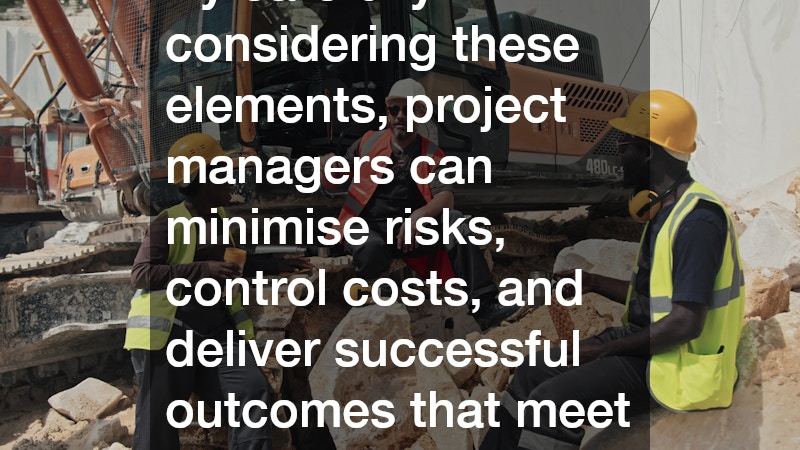Undertaking an earthmoving project requires careful planning and organisation to ensure smooth execution and optimal results. Whether it involves preparing a site for construction, landscaping, or infrastructure development, effective planning can save time, reduce costs, and avoid potential hazards.
This article will guide you through the essential steps to plan an earthmoving project effectively, providing a framework that aligns with best practices commonly used in the industry.
Understanding the Scope & Objectives
Before any earthmoving work begins, it is crucial to clearly define the scope and objectives of the project. This involves understanding what needs to be achieved and the key deliverables. For example, is the project about creating a level foundation for a building, reshaping land contours for drainage, or excavating for utilities installation? Knowing the specific goals will influence decisions on equipment, labour, timelines, and safety measures.
Engaging with all relevant stakeholders early in the process is important. This might include project managers, engineers, environmental consultants, and local authorities. Their input can help identify constraints such as site access, environmental protections, and zoning regulations. Understanding these limitations will enable planners to create realistic and compliant project plans.
Conducting a Thorough Site Assessment
A comprehensive site assessment forms the backbone of successful earthmoving projects. This step involves gathering detailed information about the terrain, soil composition, topography, and any existing infrastructure. Site surveys and soil tests provide valuable data that will determine the type and scale of earthmoving equipment required, as well as the methods of excavation or filling.
Environmental considerations are also paramount during site assessments. Identifying areas with sensitive ecosystems, watercourses, or contamination risks ensures that the earthmoving operations minimise environmental impact. In some cases, mitigation measures such as sediment control or habitat protection must be incorporated into the plan. Thorough documentation of the site conditions will also assist in managing any unforeseen challenges during the project.
Developing a Detailed Project Plan
With a clear understanding of the site and project objectives, the next step is to develop a detailed project plan. This plan should include a timeline, resource allocation, risk management strategies, and budget estimates. Earthmoving projects often involve complex logistics, including the mobilisation of heavy machinery, scheduling of skilled operators, and coordination with subcontractors or suppliers.
The timeline should reflect realistic durations for each stage of the earthmoving work, taking into account weather conditions and potential delays. Risk management is essential to anticipate hazards such as equipment breakdowns, safety incidents, or unexpected soil conditions. By identifying these risks early, contingency plans can be developed to minimise disruption.
Budgeting must also be carefully considered. Earthmoving can be costly, especially when unforeseen issues arise. Detailed cost estimates for machinery hire, fuel, labour, and site preparation help maintain financial control throughout the project. Where possible, including a contingency fund allows for flexibility without compromising overall objectives.
Ensuring Compliance & Safety
Earthmoving projects are subject to various regulations and safety standards that must be strictly followed. Compliance with local council requirements, environmental legislation, and workplace health and safety laws is non-negotiable. Failure to adhere to these rules can result in fines, project delays, and reputational damage.
A key element of planning is developing a safety management system tailored to the project. This includes conducting risk assessments, providing adequate training for operators, and implementing protocols for emergency response. Equipment must be regularly inspected and maintained to prevent accidents. Additionally, clear communication channels between team members are essential for promptly addressing any safety concerns on site.
Consulting with relevant authorities during the planning phase can also help ensure compliance. Obtaining the necessary permits and approvals ahead of time reduces the likelihood of interruptions once earthmoving operations commence.
Selecting the Right Equipment & Team
The success of an earthmoving project heavily depends on choosing suitable machinery and assembling a skilled team. Different earthmoving tasks require different equipment, such as bulldozers, excavators, graders, or loaders. The size, capacity, and efficiency of the machinery must align with the project scale and site conditions.
It is important to consider the availability of equipment and operators within the project’s location. Hiring from reputable suppliers who provide well-maintained machines and experienced operators can significantly improve productivity and safety. The team should also include supervisors and site managers capable of overseeing daily operations and ensuring quality control.
Monitoring Progress & Adjusting Plans
Once the earthmoving work begins, continuous monitoring is essential to keep the project on track. Regular site inspections and progress reports allow managers to identify any deviations from the plan and address them promptly. This might involve adjusting schedules, reallocating resources, or revising safety measures.
Effective communication among all parties involved helps resolve issues quickly and maintain momentum. Using technology such as drones or GPS tracking can enhance monitoring capabilities by providing real-time data on machinery movement and earth volumes handled.
Flexibility in planning is important, as unexpected conditions may arise during the earthmoving process. Being prepared to adapt the plan while still meeting project objectives demonstrates professionalism and ensures the outcomes meet the required standards.
Planning an earthmoving project effectively requires a structured approach that integrates clear objectives, thorough site assessment, detailed project planning, strict compliance, and ongoing monitoring. By carefully considering these elements, project managers can minimise risks, control costs, and deliver successful outcomes that meet client expectations.
Incorporating these principles into your earthmoving project plan will not only improve operational efficiency but also contribute to long-term success and reputation in the industry.

